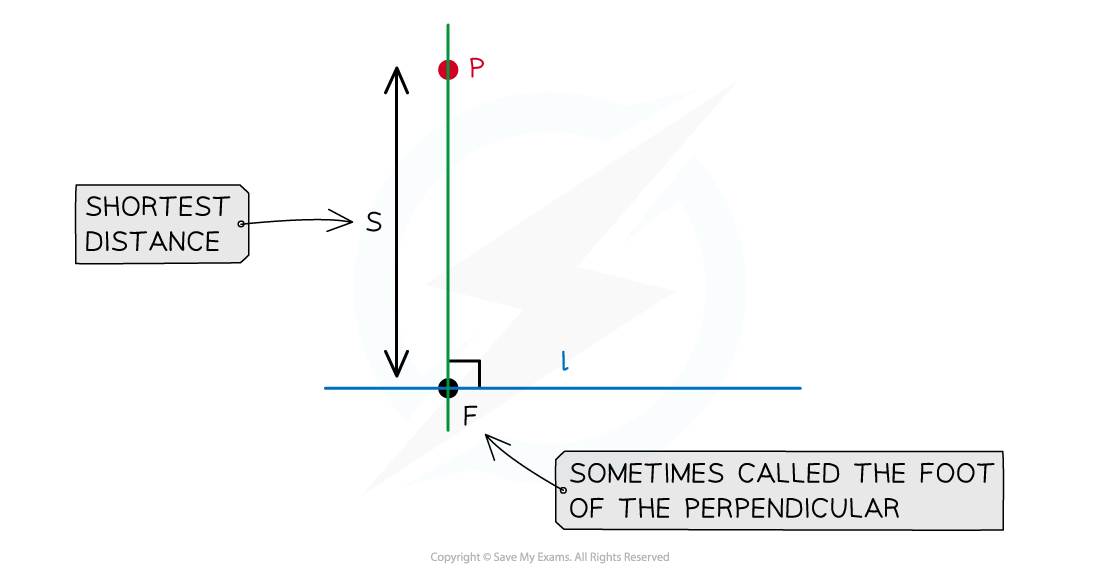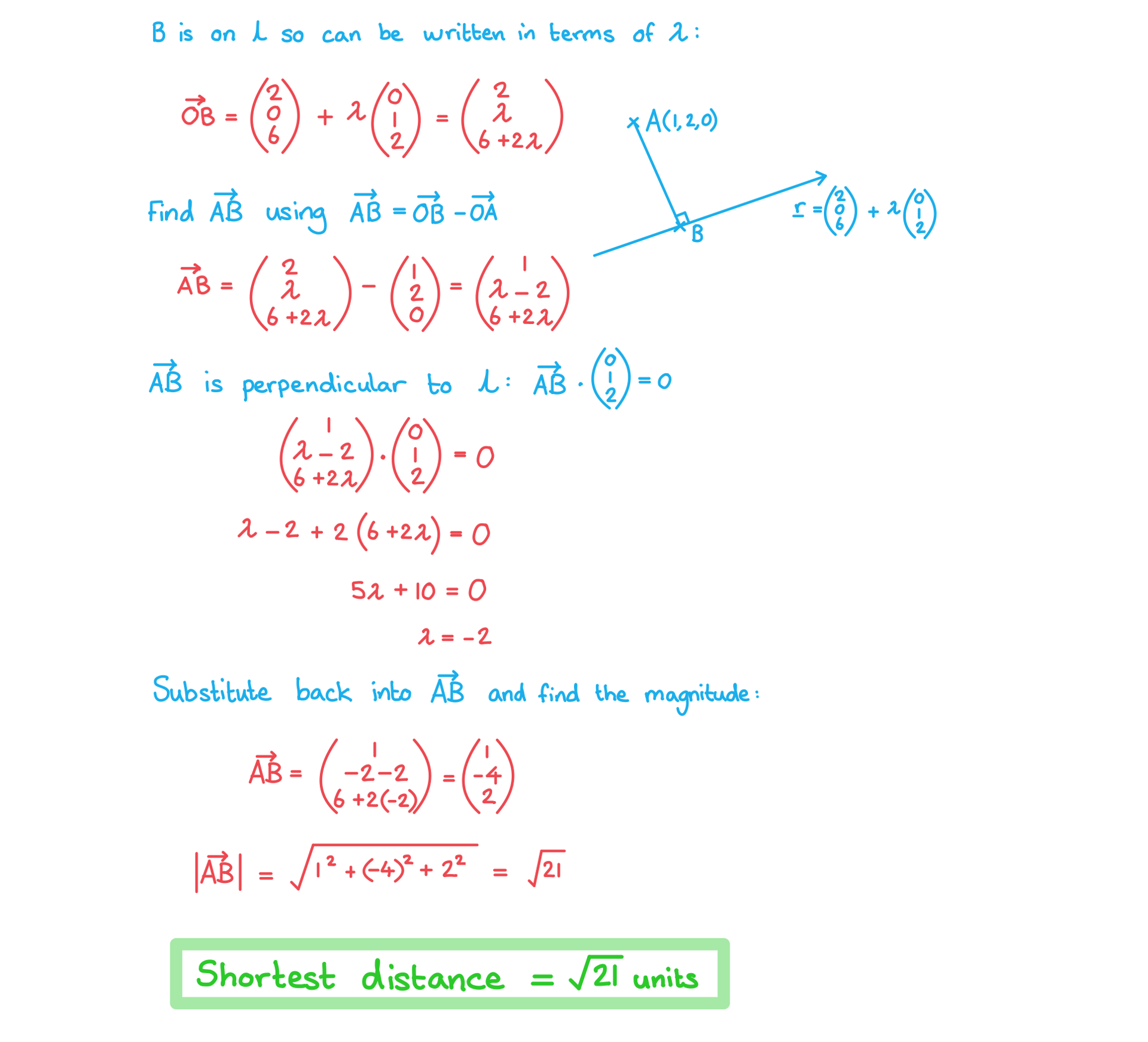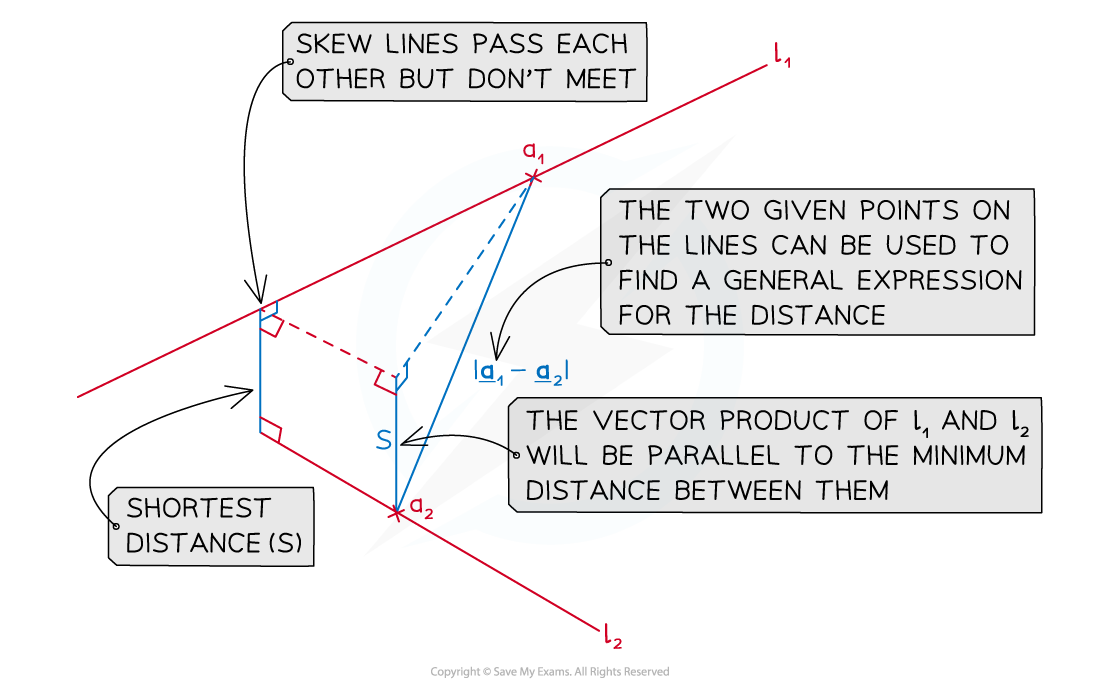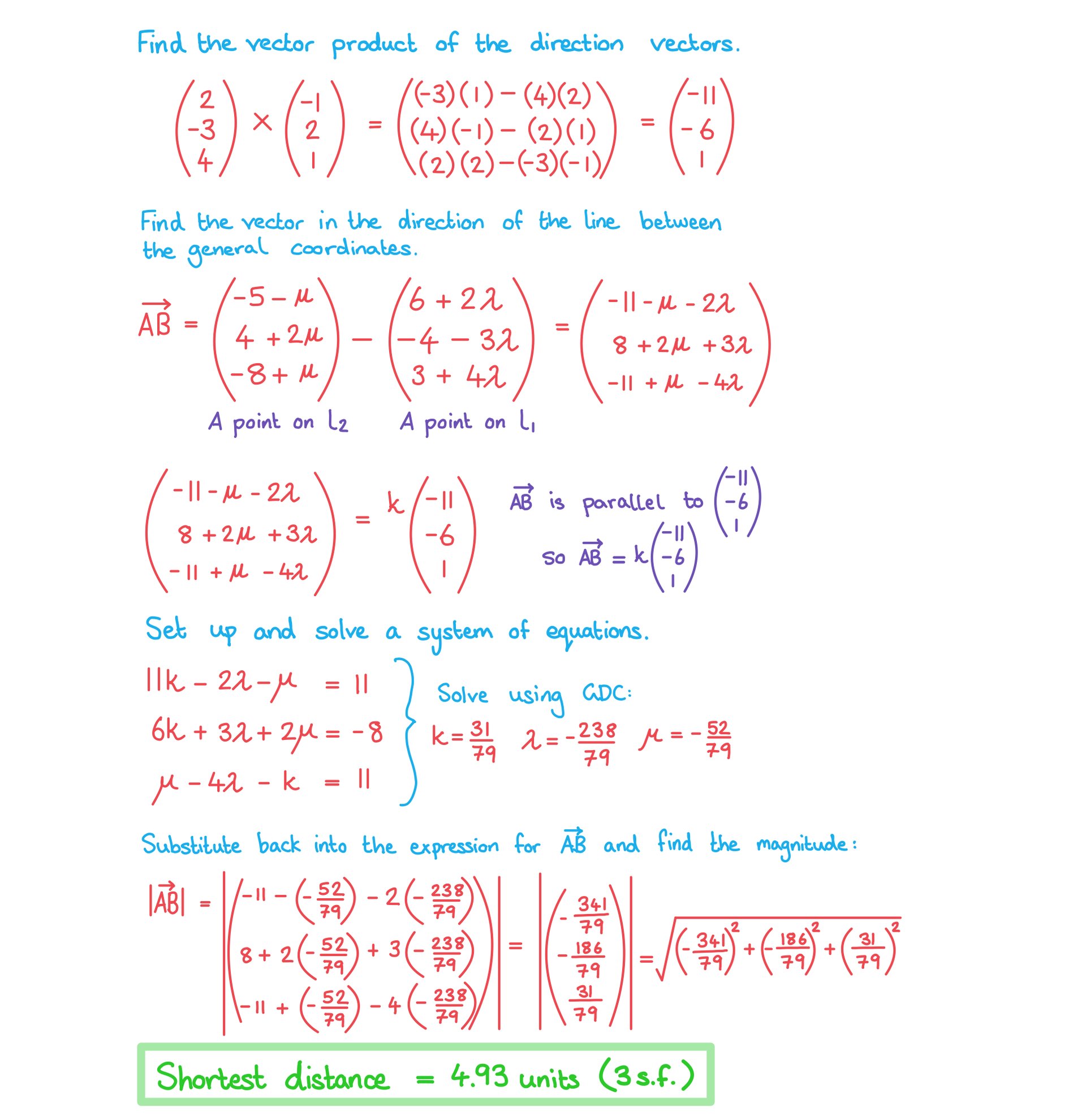Shortest Distance Between a Point and a Line
How do I find the shortest distance from a point to a line?
- The shortest distance from any point to a line will always be the perpendicular distance
- Given a line l with equation
and a point P not on l
- The scalar product of the direction vector, b, and the vector in the direction of the shortest distance will be zero
- The shortest distance can be found using the following steps:
- STEP 1: Let the vector equation of the line be r and the point not on the line be P, then the point on the line closest to P will be the point F
- The point F is sometimes called the foot of the perpendicular
- STEP 2: Sketch a diagram showing the line l and the points P and F
- The vector
will be perpendicular to the line l
- STEP 3: Use the equation of the line to find the position vector of the point F in terms of λ
- STEP 4: Use this to find the displacement vector
in terms of λ
- STEP 5: The scalar product of the direction vector of the line l and the displacement vector
will be zero
- Form an equation
and solve to find λ
- STEP 6: Substitute λ into
and find the magnitude
- The shortest distance from the point to the line will be the magnitude of
- Note that the shortest distance between the point and the line is sometimes referred to as the length of the perpendicular

How do we use the vector product to find the shortest distance from a point to a line?
- The vector product can be used to find the shortest distance from any point to a line on a 2-dimensional plane
- Given a point, P, and a line r = a + λb
- The shortest distance from P to the line will be
- Where A is a point on the line
- This is not given in the formula booklet
Exam Tip
- Column vectors can be easier and clearer to work with when dealing with scalar products.
Worked Example
Point A has coordinates (1, 2, 0) and the line has equation
.
Point B lies on the such that
is perpendicular to
.
Find the shortest distance from A to the line .

Shortest Distance Between Two Lines
How do we find the shortest distance between two parallel lines?
- Two parallel lines will never intersect
- The shortest distance between two parallel lines will be the perpendicular distance between them
- Given a line
with equation
and a line
with equation
then the shortest distance between them can be found using the following steps:
- STEP 1: Find the vector between
and a general coordinate from
in terms of μ
- STEP 2: Set the scalar product of the vector found in STEP 1 and the direction vector
equal to zero
- Remember the direction vectors
and
are scalar multiples of each other and so either can be used here
- STEP 3: Form and solve an equation to find the value of μ
- STEP 4: Substitute the value of μ back into the equation for
to find the coordinate on
closest to
- STEP 5: Find the distance between
and the coordinate found in STEP 4
- Alternatively, the formula
can be used
- Where
is the vector connecting the two given coordinates
and
- d is the simplified vector in the direction of
and
- This is not given in the formula booklet
How do we find the shortest distance from a given point on a line to another line?
- The shortest distance from any point on a line to another line will be the perpendicular distance from the point to the line
- If the angle between the two lines is known or can be found then right-angled trigonometry can be used to find the perpendicular distance
- The formula
given above is derived using this method and can be used
- Alternatively, the equation of the line can be used to find a general coordinate and the steps above can be followed to find the shortest distance
How do we find the shortest distance between two skew lines?
- Two skew lines are not parallel but will never intersect
- The shortest distance between two skew lines will be perpendicular to both of the lines
- This will be at the point where the two lines pass each other with the perpendicular distance where the point of intersection would be
- The vector product of the two direction vectors can be used to find a vector in the direction of the shortest distance
- The shortest distance will be a vector parallel to the vector product
- To find the shortest distance between two skew lines with equations
and
,
- STEP 1: Find the vector product of the direction vectors
and
- STEP 2: Find the vector in the direction of the line between the two general points on
and
in terms of λ and μ
- STEP 3: Set the two vectors parallel to each other
- STEP 4: Set up and solve a system of linear equations in the three unknowns,
and
- STEP 1: Find the vector product of the direction vectors

Exam Tip
- Exam questions will often ask for the shortest, or minimum, distance within vector questions
- If you’re unsure start by sketching a quick diagram
- Sometimes calculus can be used, however usually vector methods are required
Worked Example
Consider the skew lines and
as defined by:
:
:
Find the minimum distance between the two lines.

